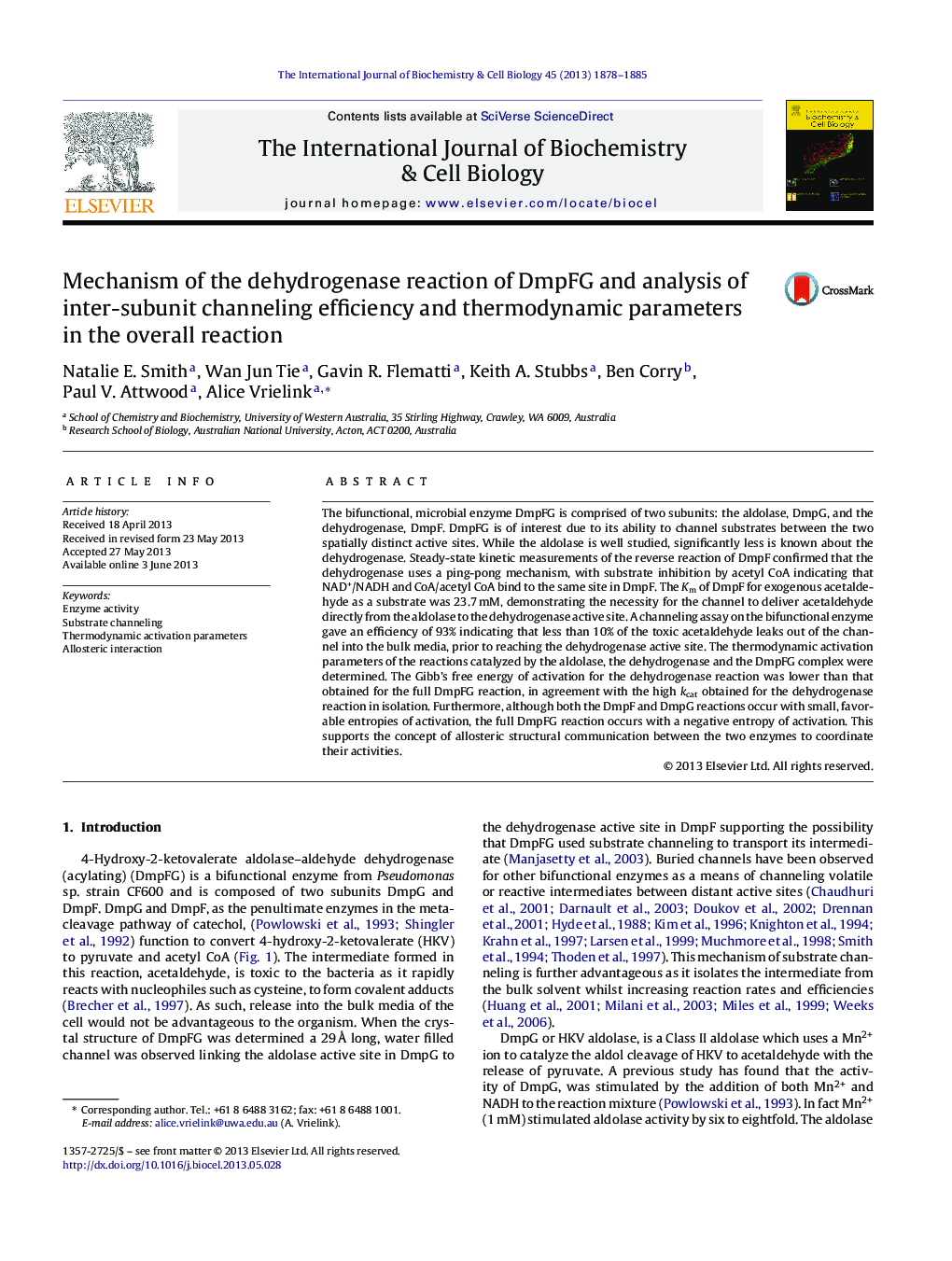| Article ID | Journal | Published Year | Pages | File Type |
|---|---|---|---|---|
| 8324131 | The International Journal of Biochemistry & Cell Biology | 2013 | 8 Pages |
Abstract
The bifunctional, microbial enzyme DmpFG is comprised of two subunits: the aldolase, DmpG, and the dehydrogenase, DmpF. DmpFG is of interest due to its ability to channel substrates between the two spatially distinct active sites. While the aldolase is well studied, significantly less is known about the dehydrogenase. Steady-state kinetic measurements of the reverse reaction of DmpF confirmed that the dehydrogenase uses a ping-pong mechanism, with substrate inhibition by acetyl CoA indicating that NAD+/NADH and CoA/acetyl CoA bind to the same site in DmpF. The Km of DmpF for exogenous acetaldehyde as a substrate was 23.7Â mM, demonstrating the necessity for the channel to deliver acetaldehyde directly from the aldolase to the dehydrogenase active site. A channeling assay on the bifunctional enzyme gave an efficiency of 93% indicating that less than 10% of the toxic acetaldehyde leaks out of the channel into the bulk media, prior to reaching the dehydrogenase active site. The thermodynamic activation parameters of the reactions catalyzed by the aldolase, the dehydrogenase and the DmpFG complex were determined. The Gibb's free energy of activation for the dehydrogenase reaction was lower than that obtained for the full DmpFG reaction, in agreement with the high kcat obtained for the dehydrogenase reaction in isolation. Furthermore, although both the DmpF and DmpG reactions occur with small, favorable entropies of activation, the full DmpFG reaction occurs with a negative entropy of activation. This supports the concept of allosteric structural communication between the two enzymes to coordinate their activities.
Keywords
Related Topics
Life Sciences
Biochemistry, Genetics and Molecular Biology
Biochemistry
Authors
Natalie E. Smith, Wan Jun Tie, Gavin R. Flematti, Keith A. Stubbs, Ben Corry, Paul V. Attwood, Alice Vrielink,
